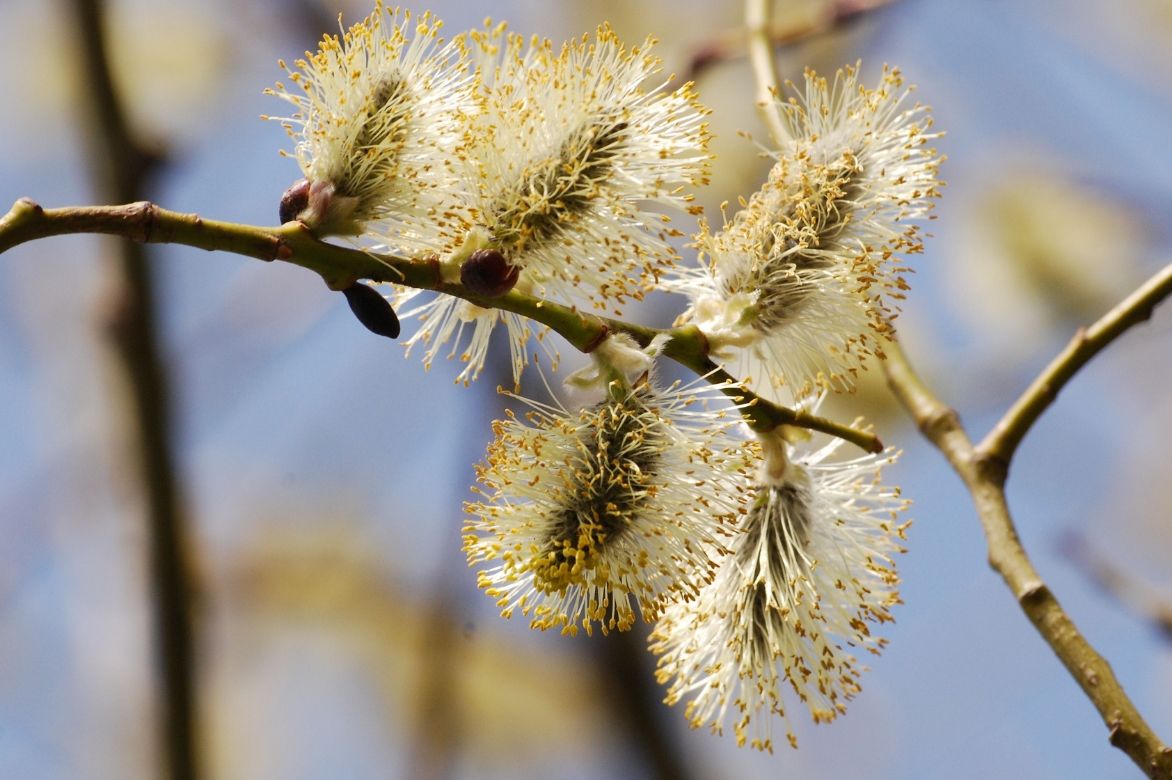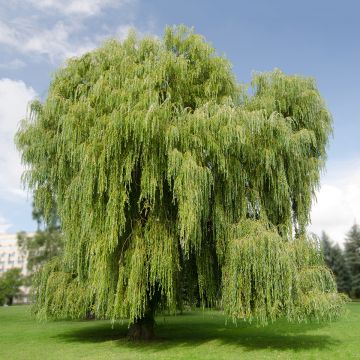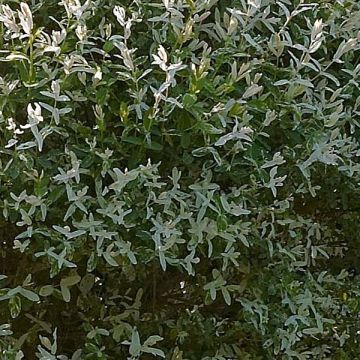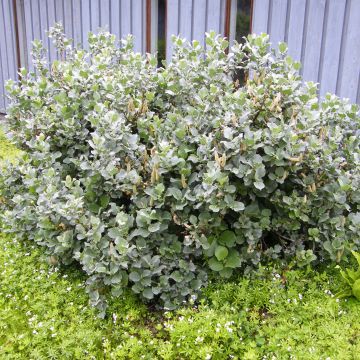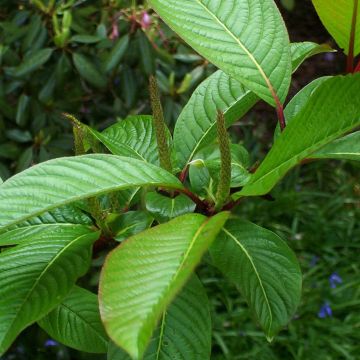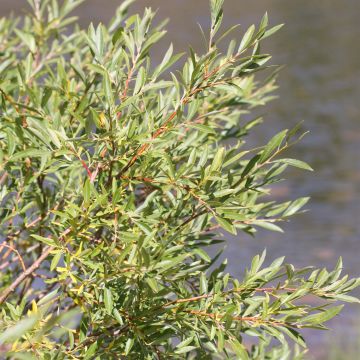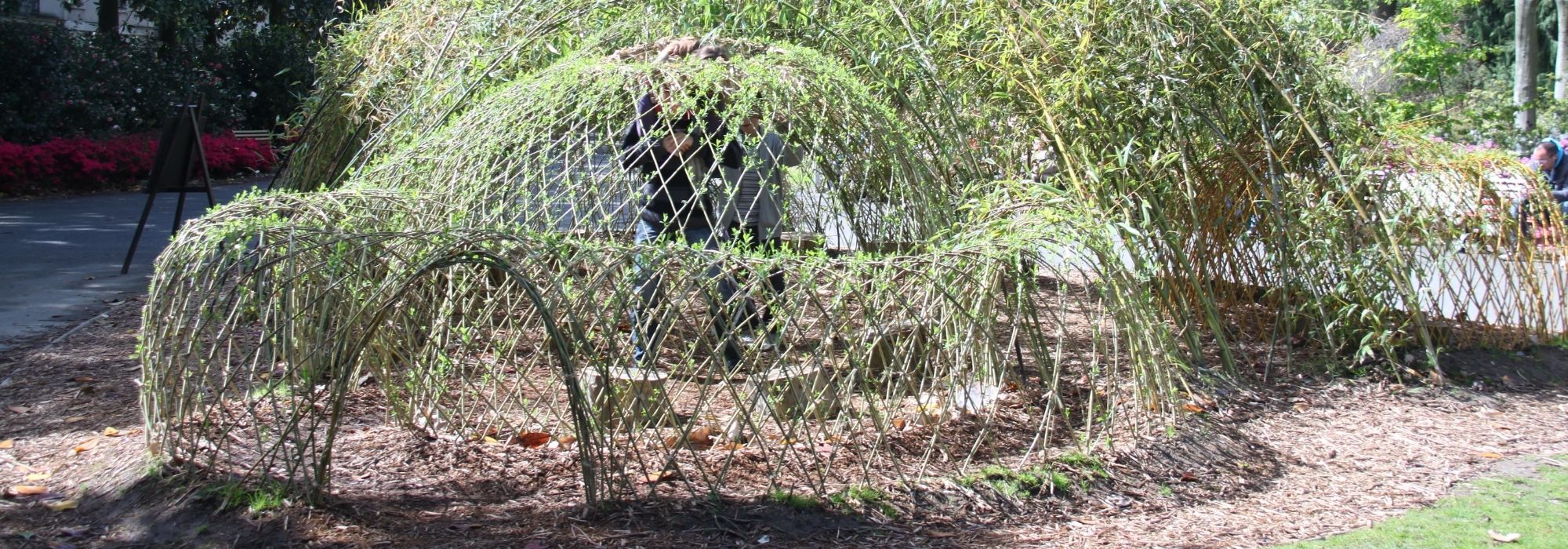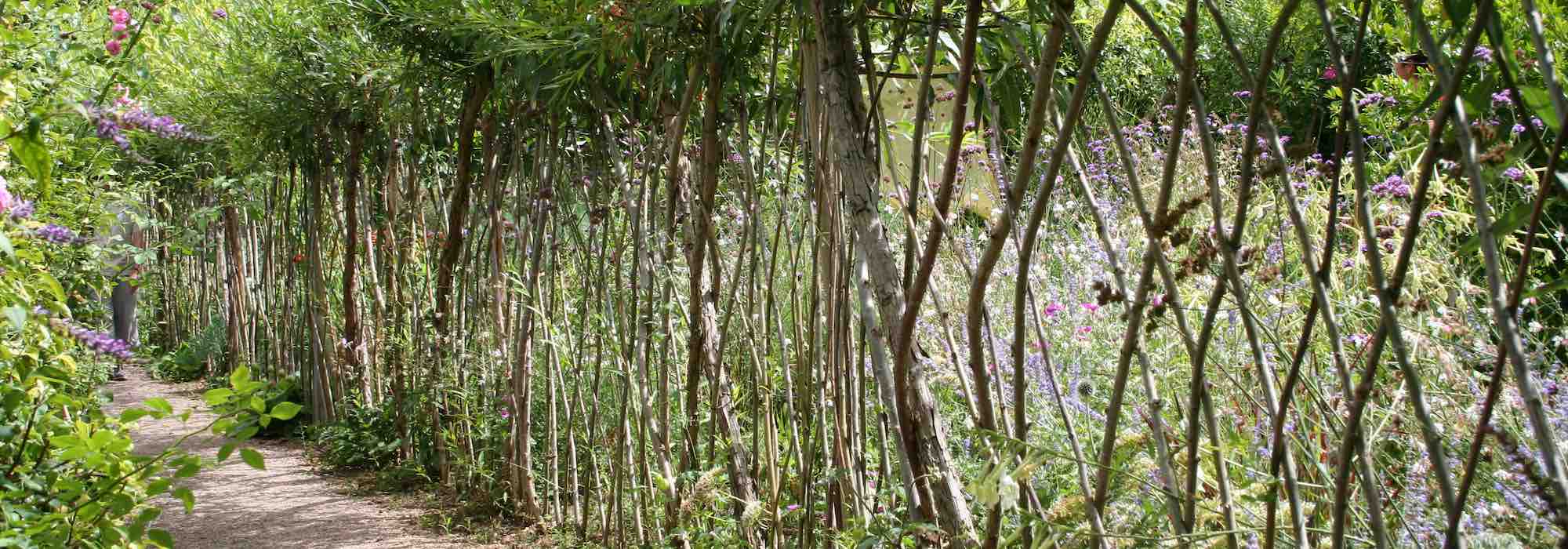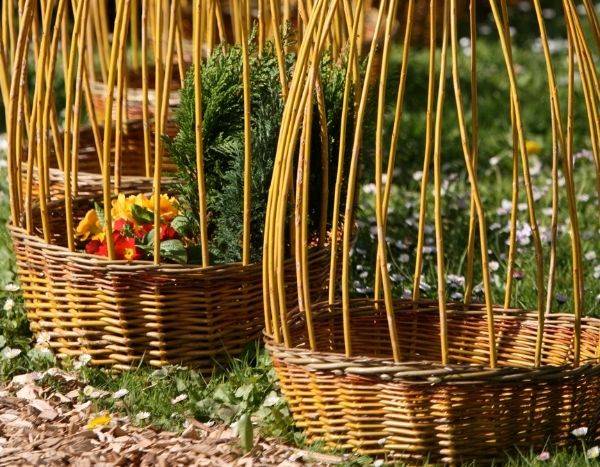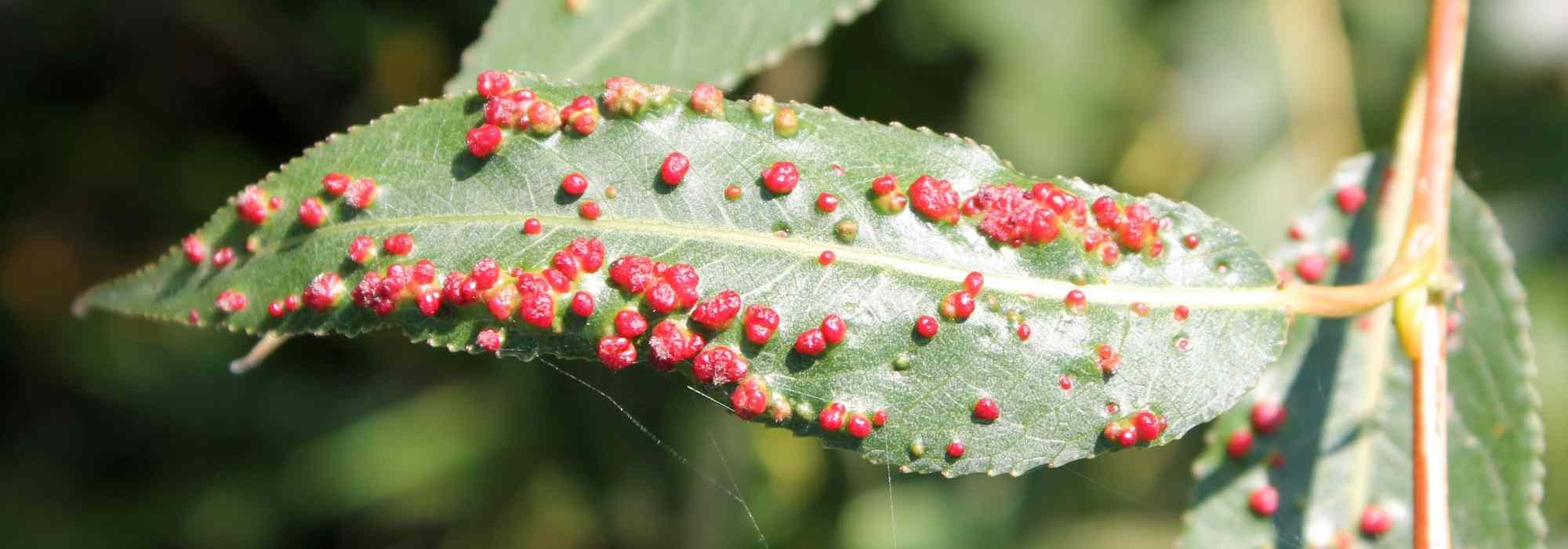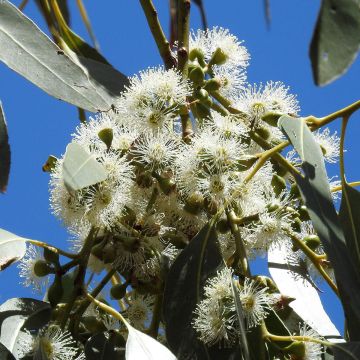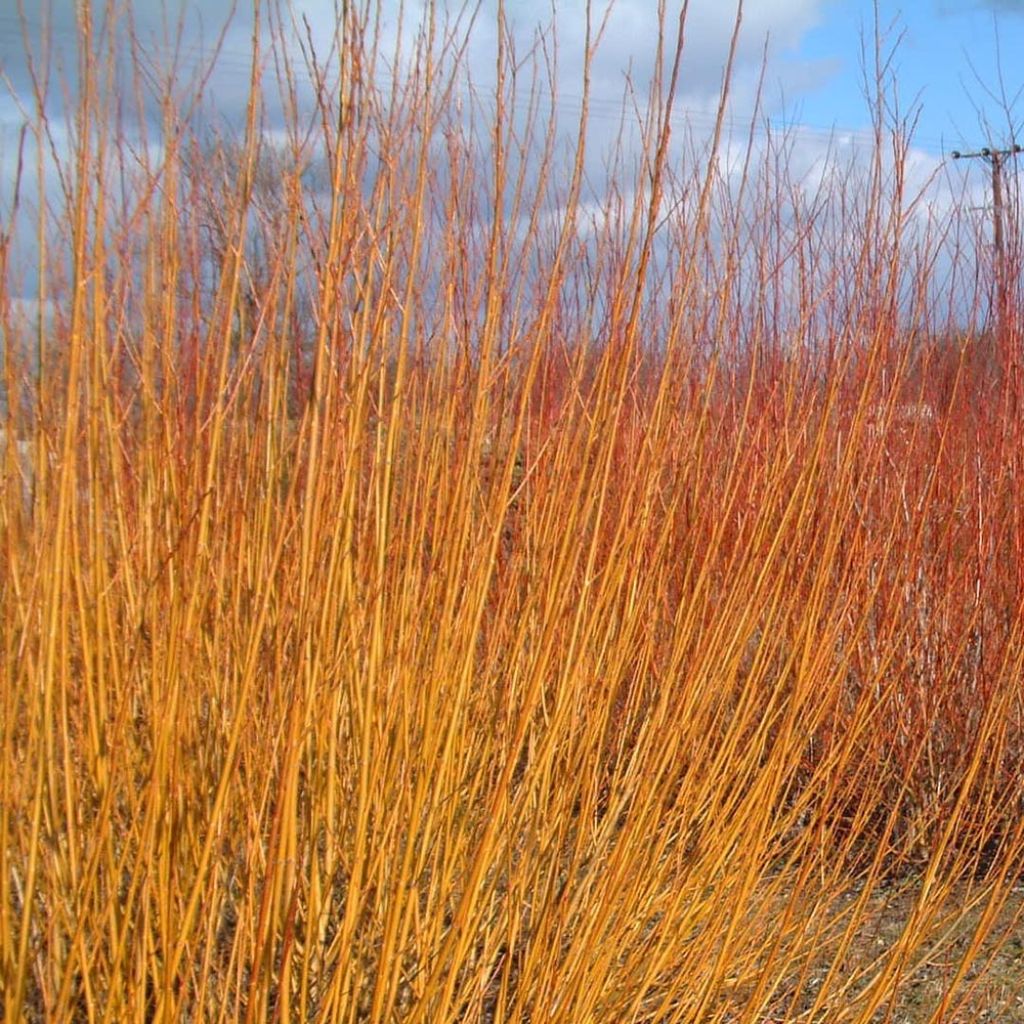

Salix alba Vitellina - Saule doré, amarine
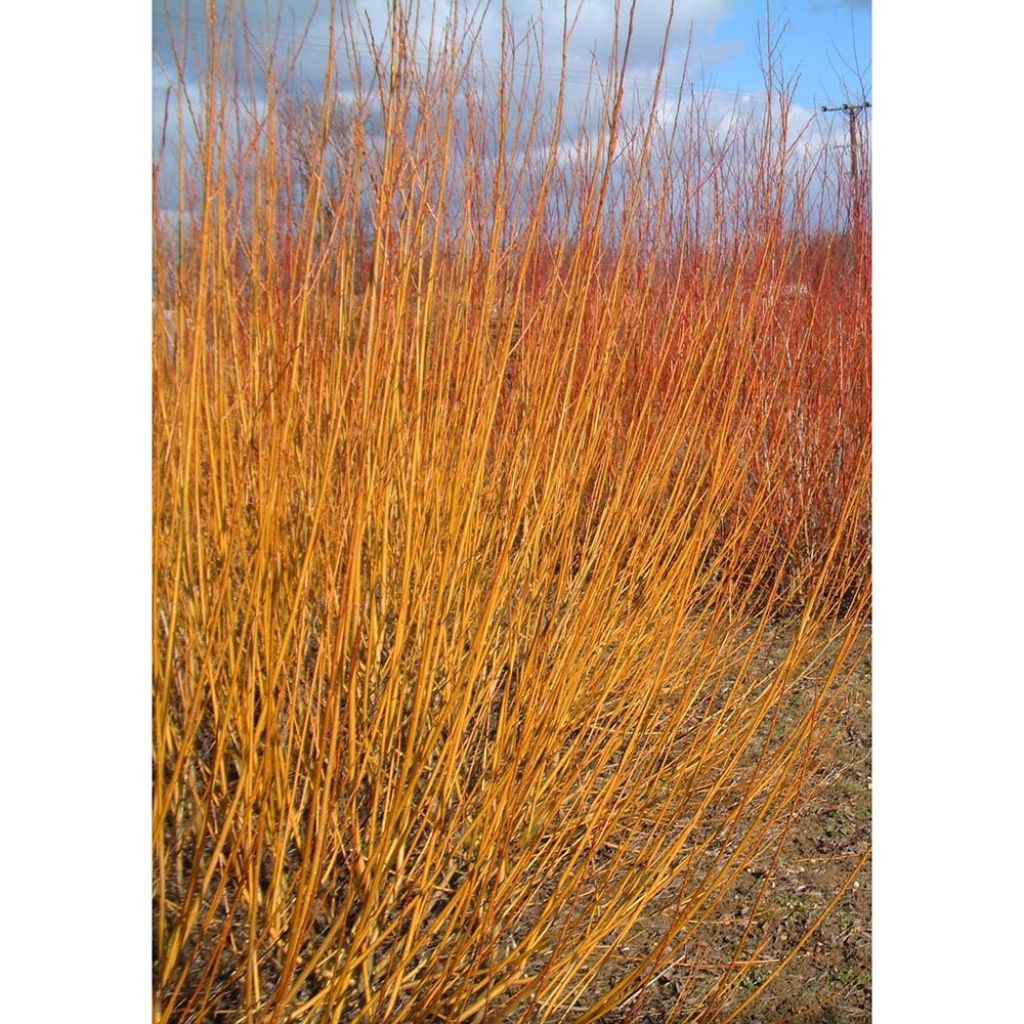

Salix alba Vitellina - Saule doré, amarine
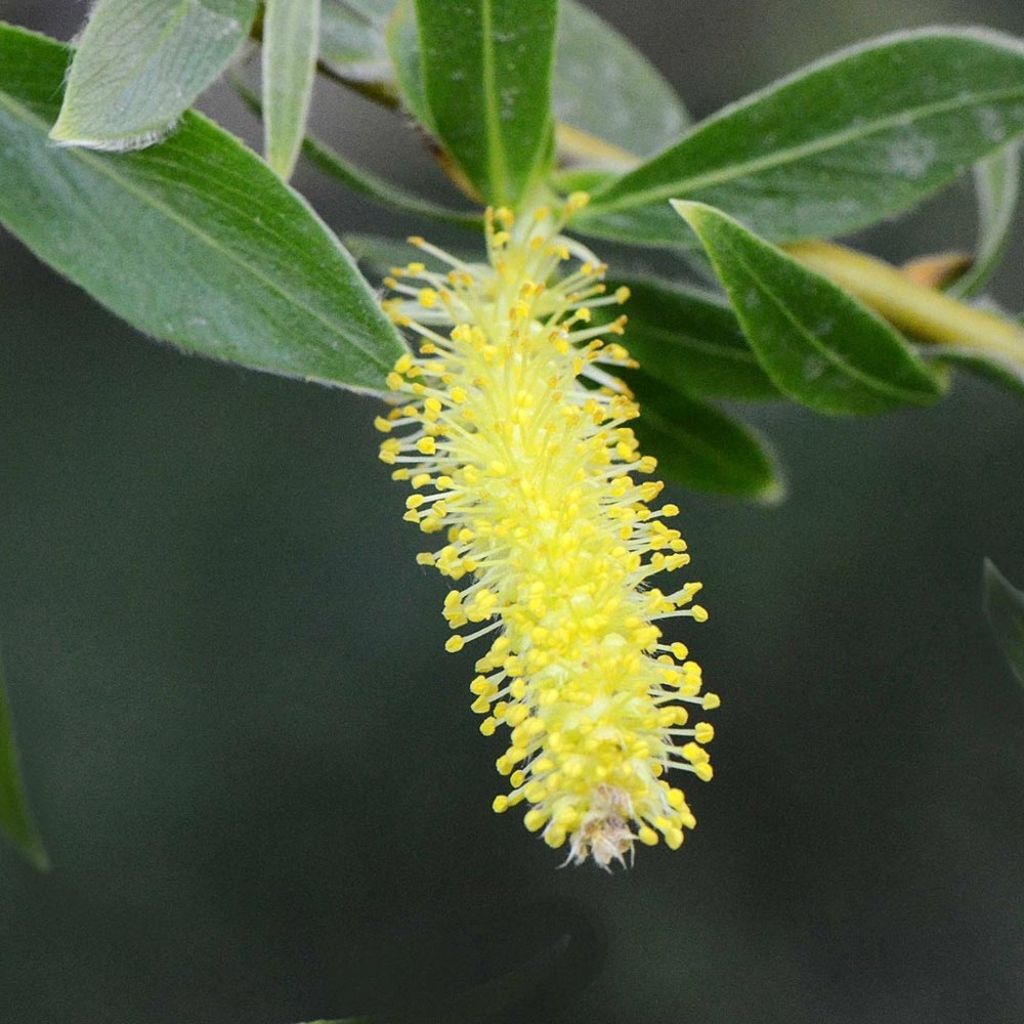

Salix alba Vitellina - Saule doré, amarine
Salix alba var. vitellina - White Willow
Salix alba var. Vitellina
Golden Willow, White Willow
One of the most beautiful decorative woven hedges. Currently unavailable, can I reserve ten (if possible at -50% as indicated)? Kind regards, Mr. HARCHAOUI
SID-AHMED, 11/05/2023
Special offer!
Receive a €20 voucher for any order over €90 (excluding delivery costs, credit notes, and plastic-free options)!
1- Add your favorite plants to your cart.
2- Once you have reached €90, confirm your order (you can even choose the delivery date!).
3- As soon as your order is shipped, you will receive an email containing your voucher code, valid for 3 months (90 days).
Your voucher is unique and can only be used once, for any order with a minimum value of €20, excluding delivery costs.
Can be combined with other current offers, non-divisible and non-refundable.
Home or relay delivery (depending on size and destination)
Schedule delivery date,
and select date in basket
This plant carries a 24 months recovery warranty
More information
We guarantee the quality of our plants for a full growing cycle, and will replace at our expense any plant that fails to recover under normal climatic and planting conditions.
Would this plant suit my garden?
Set up your Plantfit profile →
Description
Salix alba var. vitellina, commonly known as the yellow willow, golden willow or goat willow, is part of our landscapes and culture. It has been cultivated along watercourses and in wet areas since ancient times, often pruned in pollard style during the harvest of its long, flexible branches of a beautiful golden-copper colour highly appreciated in basketry. Left to grow freely, this large and beautiful deciduous tree draws a wildly romantic silhouette under the winter sun, carried by an upright and gracefully trailing crown, almost flamboyant. In the summer, its wide crown adorned with silvery foliage captures the light in a unique way, making it easily visible from afar. A willow always brings a special atmosphere to the garden. This one, ideal for illuminating dark backgrounds, is best suited for a large garden, near vast expanses of water.
Originally from wet areas of the Northern Hemisphere, particularly in Europe, temperate Asia and North Africa, the Salix alba is a highly adaptable tree with very rapid growth, capable of reaching 20m (66ft) in height and 10-12m (33-39ft) in width. It belongs to the willow family (Salicaceae) and the genus Salix, which includes no less than 300 species distributed in the cold regions of the Northern Hemisphere. 'Vitellina' is considered a subspecies with yellow wood. Its habit is generally rounded, with the tree developing one or more trunks topped with a very broad crown. The long, flexible branches are yellow-copper and downy when young, then become more grey. They bear deciduous leaves, 10cm (4in) long, narrow and lanceolate in shape. Both sides of the leaf are silky, with the upper side being shiny and dark green, and the lower side silver-white. Before falling in autumn, they turn yellow. The flowering takes place in April-May, at the same time as the young leaves appear. The yellowish male catkins are slender, 3 to 5cm (1 to 2in) long, arched and spreading. The female catkins are smaller, denser and green. The bark of this tree takes on a brown-grey colour over the years, cracking lengthwise and becoming corky. Its powerful root system, both taproot and extensively spreading, is perfectly adapted to deep and unstable soils. For this reason, it is advisable to keep this willow away from drainage systems. The white willow is also a medicinal plant, with its bark being the first source of aspirin. Salix alba can reach the venerable age of 100 years.
The Vitellina willow can be planted as a specimen tree or on the edge of a body of water in large gardens. Regularly pruned and planted closely together, it can also form a beautiful windbreak hedge at the garden's boundary. Its silvery foliage is precious for bringing light to a darker scene, for example at the edges of the countryside. Among the plants that will accompany it near the water are horsetails, reeds, willowherbs, daylilies, bulrushes and Typha angustifolia, for example.
Tip: Collect the fallen leaves in autumn and burn them if the tree shows black spots (anthracnose) or yellow-orange spots (rust) during its growth. Once all the leaves have fallen, treat with Bordeaux mixture.
Salix alba var. vitellina - White Willow in pictures
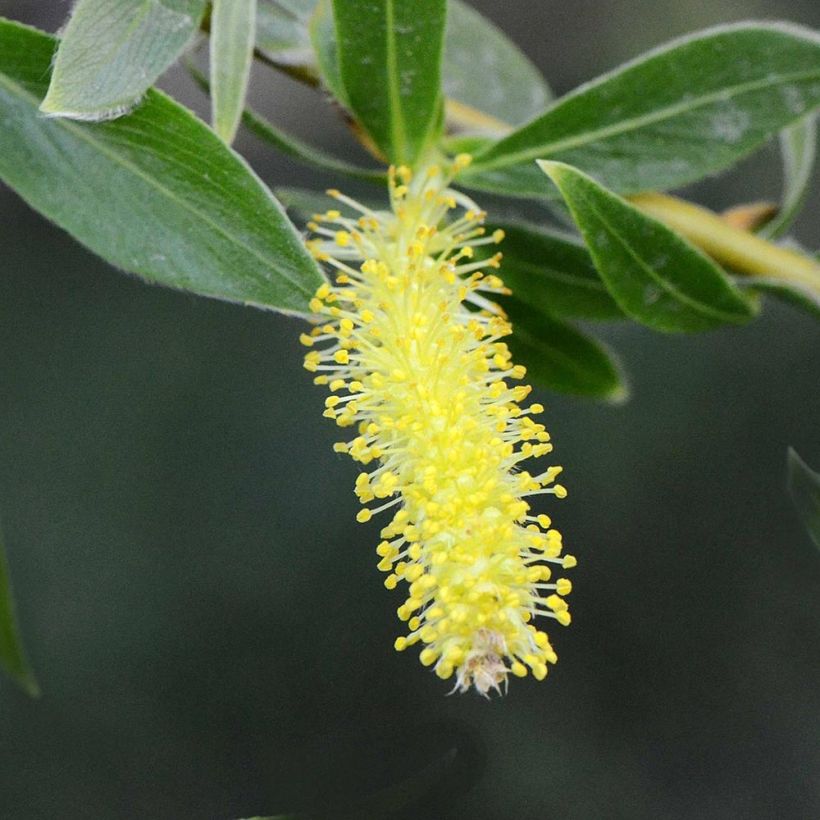

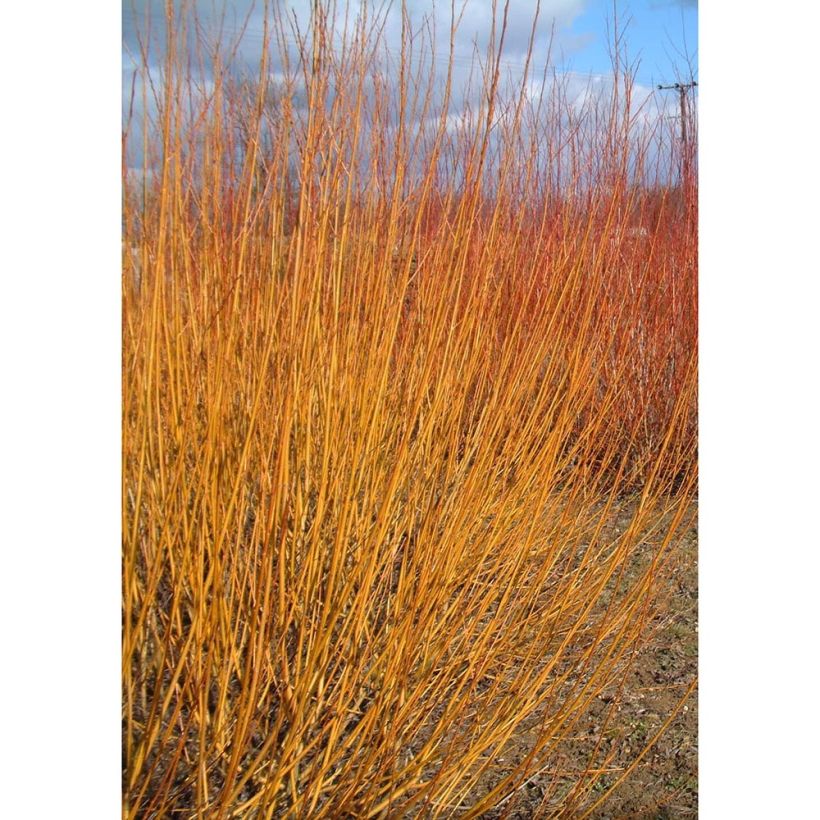

Plant habit
Flowering
Foliage
Botanical data
Salix
alba
var. Vitellina
Salicaceae
Golden Willow, White Willow
Central Asia
Other Willow - Salix
View all →Planting and care
Salix alba Vitellina should be planted in autumn, from September to November, in any rich moist soil, even wet and heavy, in a sunny position. Water and mulch the young plants. Once well established in deep soil, it will manage on its own. To limit its growth, prune all the branches regularly and severely to form what is called a pollard, a kind of stump from which numerous shoots grow. Pruning like this during winter is often the best way to contain anthracnose attacks (black spots, cracks).
Planting period
Intended location
Care
Planting & care advice
-
, onOrder confirmed
Reply from on Promesse de fleurs
Similar products
Haven't found what you were looking for?
Hardiness is the lowest winter temperature a plant can endure without suffering serious damage or even dying. However, hardiness is affected by location (a sheltered area, such as a patio), protection (winter cover) and soil type (hardiness is improved by well-drained soil).

Photo Sharing Terms & Conditions
In order to encourage gardeners to interact and share their experiences, Promesse de fleurs offers various media enabling content to be uploaded onto its Site - in particular via the ‘Photo sharing’ module.
The User agrees to refrain from:
- Posting any content that is illegal, prejudicial, insulting, racist, inciteful to hatred, revisionist, contrary to public decency, that infringes on privacy or on the privacy rights of third parties, in particular the publicity rights of persons and goods, intellectual property rights, or the right to privacy.
- Submitting content on behalf of a third party;
- Impersonate the identity of a third party and/or publish any personal information about a third party;
In general, the User undertakes to refrain from any unethical behaviour.
All Content (in particular text, comments, files, images, photos, videos, creative works, etc.), which may be subject to property or intellectual property rights, image or other private rights, shall remain the property of the User, subject to the limited rights granted by the terms of the licence granted by Promesse de fleurs as stated below. Users are at liberty to publish or not to publish such Content on the Site, notably via the ‘Photo Sharing’ facility, and accept that this Content shall be made public and freely accessible, notably on the Internet.
Users further acknowledge, undertake to have ,and guarantee that they hold all necessary rights and permissions to publish such material on the Site, in particular with regard to the legislation in force pertaining to any privacy, property, intellectual property, image, or contractual rights, or rights of any other nature. By publishing such Content on the Site, Users acknowledge accepting full liability as publishers of the Content within the meaning of the law, and grant Promesse de fleurs, free of charge, an inclusive, worldwide licence for the said Content for the entire duration of its publication, including all reproduction, representation, up/downloading, displaying, performing, transmission, and storage rights.
Users also grant permission for their name to be linked to the Content and accept that this link may not always be made available.
By engaging in posting material, Users consent to their Content becoming automatically accessible on the Internet, in particular on other sites and/or blogs and/or web pages of the Promesse de fleurs site, including in particular social pages and the Promesse de fleurs catalogue.
Users may secure the removal of entrusted content free of charge by issuing a simple request via our contact form.
The flowering period indicated on our website applies to countries and regions located in USDA zone 8 (France, the United Kingdom, Ireland, the Netherlands, etc.)
It will vary according to where you live:
- In zones 9 to 10 (Italy, Spain, Greece, etc.), flowering will occur about 2 to 4 weeks earlier.
- In zones 6 to 7 (Germany, Poland, Slovenia, and lower mountainous regions), flowering will be delayed by 2 to 3 weeks.
- In zone 5 (Central Europe, Scandinavia), blooming will be delayed by 3 to 5 weeks.
In temperate climates, pruning of spring-flowering shrubs (forsythia, spireas, etc.) should be done just after flowering.
Pruning of summer-flowering shrubs (Indian Lilac, Perovskia, etc.) can be done in winter or spring.
In cold regions as well as with frost-sensitive plants, avoid pruning too early when severe frosts may still occur.
The planting period indicated on our website applies to countries and regions located in USDA zone 8 (France, United Kingdom, Ireland, Netherlands).
It will vary according to where you live:
- In Mediterranean zones (Marseille, Madrid, Milan, etc.), autumn and winter are the best planting periods.
- In continental zones (Strasbourg, Munich, Vienna, etc.), delay planting by 2 to 3 weeks in spring and bring it forward by 2 to 4 weeks in autumn.
- In mountainous regions (the Alps, Pyrenees, Carpathians, etc.), it is best to plant in late spring (May-June) or late summer (August-September).
The harvesting period indicated on our website applies to countries and regions in USDA zone 8 (France, England, Ireland, the Netherlands).
In colder areas (Scandinavia, Poland, Austria...) fruit and vegetable harvests are likely to be delayed by 3-4 weeks.
In warmer areas (Italy, Spain, Greece, etc.), harvesting will probably take place earlier, depending on weather conditions.
The sowing periods indicated on our website apply to countries and regions within USDA Zone 8 (France, UK, Ireland, Netherlands).
In colder areas (Scandinavia, Poland, Austria...), delay any outdoor sowing by 3-4 weeks, or sow under glass.
In warmer climes (Italy, Spain, Greece, etc.), bring outdoor sowing forward by a few weeks.






























